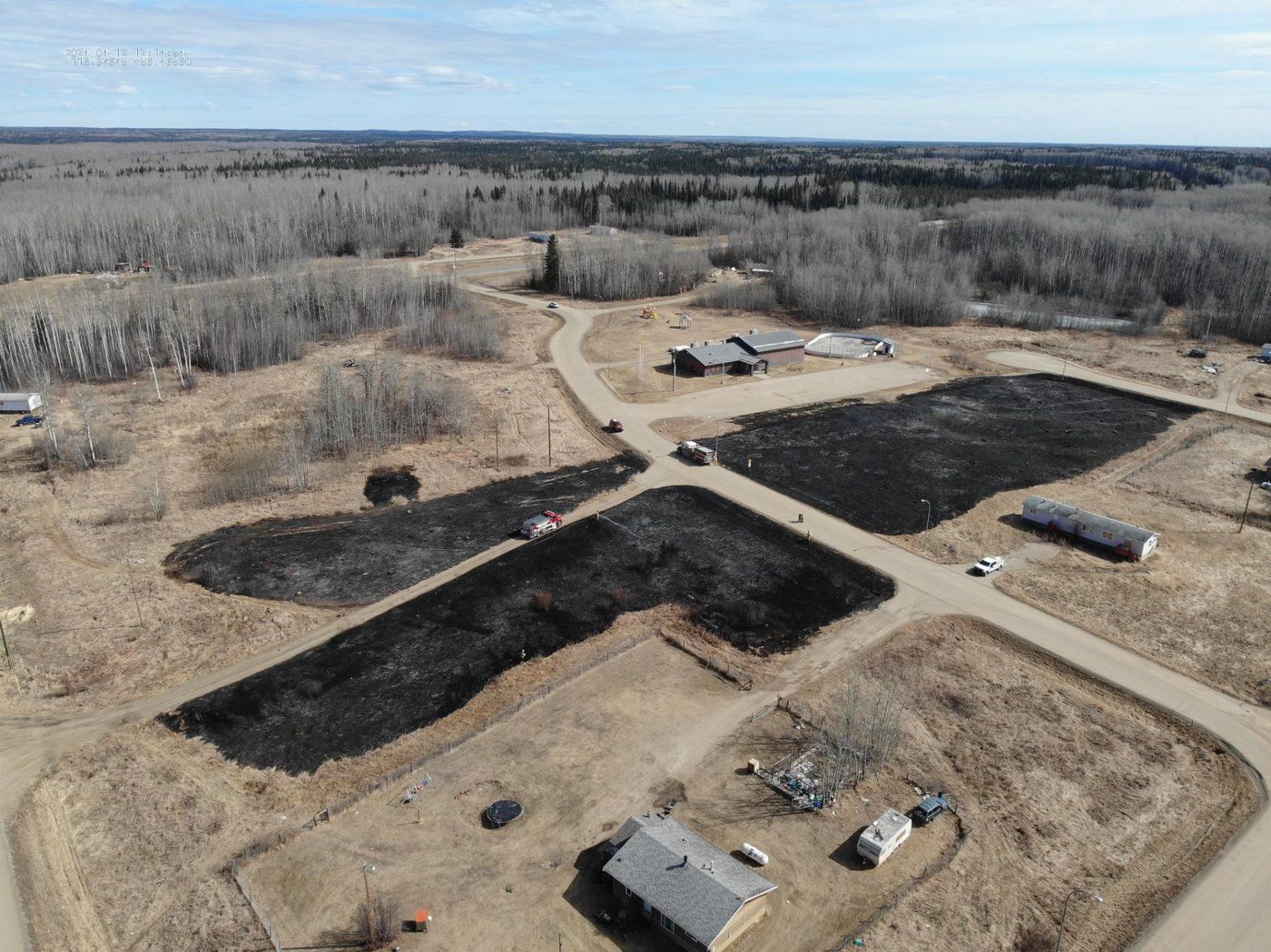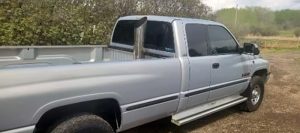Northern fire chiefs preparing for the worst

Emily Plihal,
Local Journalism Initiative Reporter
Local fire chiefs are asking people to be cognizant of the very dry conditions in the region and to pay heed to their actions that could cause disastrous and uncontrollable fires.
“If you have any brush piles or burns from last season it is best you check them to ensure they are completely out and not smoldering inside,” says Smoky River Fire and Rescue fire chief Marcel Maure.
“Currently, there are no fire permits being issued in the M.D. of Smoky River and all that is currently allowed is small safe fires in approved fire pits.”
Maure says the M.D. of Smoky River is currently in a fire restriction, but he anticipates that as a result of very little moisture this will likely be changed to a complete fire ban in upcoming days.
As of May 7, Northern Sunrise County fire chief David LeBlanc says their county has been put into a fire advisory and that permits will only be issued on a case-by-case basis. He adds residents can do things to ensure they are being fire smart.
“Use portable cooking devices, no campfires unless in a campsite pit, clean your ATV/UTV mufflers of grass and debris before use and bring a 2.5- or 5-lb ABC fire extinguisher with you,” Leblanc says, adding to ensure cigarettes are completely out in dirt.
“Burn barrels and fire pits must have a screen and one metre of gravel or dirt around them, 10 feet from exposures. Check out your newsletter and county website for more information that we post on a regular basis.”
Maure adds when fires are left uncontrolled or unattended they have the potential to cause devastation and agrees with Leblanc that ATV’s spark arrestors and exhaust must be checked for dried mud or dry grasses, noting that these are often the cause of accidental fires.
“Ensure you are safe and always attend your fires, ensure they are out when leaving an area,” says Maure.
“Keeping your campfire small and safe is the best way to keep the fires safely in your camp,” he adds. “Having a screen on the top of the fire also ensures that sparks have less tendencies to fly out and into dry, cured grasses or treed areas.”
Fire smart literature can be obtained at most municipal offices or on their respective websites with information about how the spread of wildfires can be prevented.
“We have taken some preventive measures and done some control burns to areas that would or could have potential to cause problems,” says Maure.
“We are also doing an evacuation drill for the town of McLennan to ensure is it needed, we have a plan in place.”
Leblanc says in Northern Sunrise County that no campfires are permitted unless they are in a fire pit with a screen and winds are less than 10 km/hr. Ensure you have a hose or extinguisher on standby and ensure to dampen grass at least 10 feet around fire pits.
He adds to wet areas down before grinding or welding, and don’t play with matches.
“(Northern Sunrise) County is working on a drought plan as per the province requirements, checking burn piles from the winter, we have a fine fuel mitigation program where we burn high risk areas to eliminate the hazards, and fire crews train about 20 hours just in wildland fire response each spring plus a 30-hour certified Wildland Firefighter course with a wildland urban interface component we are hosting this year,” he says.
“County municipal staff with regional partners completed a mock disaster exercise with Part 2 coming up in the fall. We had a regional meeting with Alberta Forestry last week to go over mutual aid documents, fuel mitigation in the fall, communications, and cross training with Alberta Forestry, and we do proactive fire restrictions or bans based on weather conditions and weekly forecasts.”
Both fire chiefs say to ensure to report any fires you see and offer water or resources when the fire department is attending to fires.
“It is also great to let the incident commander know what you have to offer for equipment,” says Maure.
“We do ask that you please do not self deploy and start doing stuff without talking to or meeting with the incident commander.”
Leblanc says there are some ways that residents can help in the case of fires.
“In case with the Harmon Valley fire and the fire this year by the remand centre, we use those that have tillers or harrows to help break up the dirt around the field edges to limit fire spotting across fields and roads,” he says.
“Some have dugouts we can use for drafting and sprinkler setups. Large trailers with water tanks that can deliver water to crews or wet around your homes and buildings to avoid creeping fires in grasses, and wet down roofs, set up sprinklers around home, hit hot spots from flying ambers with shovels or garden hose, preplan to set up a pump in your dugout with sprinklers if there is a fire in your area.”
Leblanc adds if there is a large fire, the County Emergency Coordination Centre has been opened to let them know what equipment people have to offer and you might be asked to assist. Leblanc says equipment can includes tractors, water trucks, and tillers.
As of May 8, at 12 a.m., Birch Hills County has been placed under a complete fire ban. All fires in this area are prohibited, including campfires, large fuel loaded fires, use of tiki torches, firecrackers, sky lanterns, burning barrels or cages, use of binary exploding targets, and fires burning woody debris in outdoor stoves. ATV and OHV for recreational use are also banned.
Effective May 9, reports have Peace River listed currently as being under a fire restriction and Big Lakes County listed as fire advisory.
Emily Plihal,
Local Journalism Initiative Reporter
South Peace News


